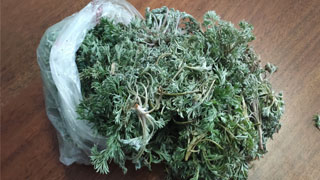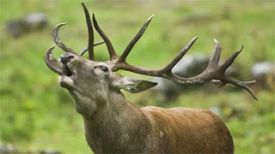
1. Alias
Artemisia scoparia, Artemisia scoparia, Artemisia scoparia, and Artemisia scoparia.
2. Plant morphology
Semi shrub. The stem is upright, with a woody base and longitudinal stripes. It is purple in color and has many branches. The young branches are covered with gray white fine hairs, while the old ones fall off. The basal leaves are scattered on the ground, with stems, wider, 2-3 lobed or palmate lobes, small lobes linear or ovate, and both sides are densely covered with silk hairs; The lower leaves wither during flowering; Stems and leaves have no stems, with thin or hairy lobes that embrace the stem at the base. The veins are wide and covered with light brown hairs. The leaves at the ends of the branches gradually become shorter and often hairless. The head shaped inflorescence is spherical, mostly integrated into a conical shape; The flowers are light green in color, with fertile outer female flowers and a bifurcated stigma; The male and female flowers in the middle are infertile, and the stigma does not split. The achene is oblong in shape and hairless. The flowering period is from August to September, and the fruiting period is from September to October.
3. Origin distribution
Born on slopes, riverbanks, and gravelly areas. It is distributed in most parts of our country.
4. Harvesting and processing
Harvest seedlings in spring when they are 6-10 centimeters tall or when flower buds grow in autumn, remove impurities and old stems, and dry them in the sun. The harvested plants in spring are commonly called "Mianyinchen", while those harvested in autumn are commonly called "Yinchenhao".
5. Characteristics of medicinal herbs
Mianyinchen: often curled into clusters, gray white or gray green, densely covered with white fur, soft as velvet. The stem is small, with obvious longitudinal lines visible after removing the white hairs on the surface; Crispy and easy to break. The leaves have stems, and when flattened, the leaves divide into 1-3 feather like segments. The small lobes are ovate or lanceolate in shape, with a sharp tip. It has a fragrant aroma and a slightly bitter taste. Artemisia scoparia: cylindrical, branching, surface light purple or purple, with longitudinal stripes, covered with short hairs; Lightweight, brittle in texture, with a white cross-section. Leaves are dense or often shed. The lower leaves are deeply lobed 2-3 times, with lobes in the form of strips or thin strips, and both sides are densely covered with white soft hairs; The stem and leaves are fully lobed 1-2 times, with the base embracing the stem and the lobes being filamentous. The inflorescence is ovate in shape, mostly integrated into a conical shape, with a short stem; The achene is oblong in shape and yellow brown in color. It has a fragrant aroma and a slightly bitter taste.
6. Sexual Taste Returning to the Classics
Slightly cold in nature, bitter and pungent in taste. The spleen meridian, stomach meridian, and bladder meridian.
7. Effect and Function
Clear dampness and heat, relieve jaundice. It belongs to the subcategory of diuretics and diuretics, and is classified as diuretics and diuretics.
8. Clinical application
Dosage: 6-15 grams, decoct in water and take orally, apply an appropriate amount externally, boil in water, smoke and wash. Used to treat jaundice, oliguria, wet sores, itching, and infectious jaundice hepatitis.
9. Pharmacological research
It has the effects of choleretic, antipyretic, hepatoprotective, lipid-lowering, hypotensive, anti asthmatic, antibacterial, antiviral, diuretic, anticancer, analgesic, anti caries, anti-inflammatory, and has inhibitory effects on hepatitis virus.
10. Chemical composition
Containing folic acid and volatile oil; Flowers and fruits contain 6,7-dimethoxycoumarin, potassium chloride, and chlorogenic acid. It also contains components such as chlorogenic acid, eucalyptol, artemisic acid, 4-methylartemisic acid, artemisic acid, etc.
11. Usage taboos
Yellow deficiency and withering caused by spleen deficiency and blood deficiency are generally not suitable for use.
12. Compatibility prescription
① For the treatment of Yangming disease, but with sweating on the head, no sweating on the body, difficulty urinating, stagnant heat inside, and yellowing of the body: 180 grams of Artemisia scoparia, 14 pieces of gardenia (broken), and 60 grams of rhubarb (peeled). Boil Yin Chen with one bucket of water and two liters. Reduce the amount by six liters and add two flavors. Take three liters and remove the residue. Divide into three servings. Urine should be smooth, like soapberry juice. (Yin Chen Hao Tang from "Treatise on Cold Damage")
② To treat jaundice, one should feel yellow all over the body and urinate like thick gardenia juice: 120 grams of Artemisia scoparia, 90 grams of Scutellaria baicalensis, 60 grams of Fructus Aurantii (roasted), and 90 grams of rhubarb. The four ingredients are as big as wutong. On an empty stomach, take 20 pills of rice drink once a day, gradually increasing to 25 pills with a slight benefit. Avoid hot noodles, garlic, buckwheat, sticky food, and stale substances. (Quoted from "Guangji Fang" Yinchen Wan in "Waitai")
③ Treating stool self benefiting and graying: 9 grams of Artemisia scoparia, 6 grams of Gardenia jasminoides and 6 grams of Huanglian each. Boil two cups of water until 80%. Go to my clothes. (Finger Palm of a Living Person with Cold Damage "Yin Chen Zhi Zi Huang Lian Tang)
④ To treat yellowing, deep and slow pulse, cold limbs, and spontaneous sweating above the waist: 60 grams of Artemisia scoparia, one aconite, 45 grams of dried ginger (roasted), and 30 grams of licorice (roasted). Above is coarse powder. Divide into four sections, boil in water and take orally. (Yu Ji Wei Yi "Yin Chen Si Ni Tang)
⑤ Treating sores and ulcers: Hold Artemisia scoparia in two hands, take five liters of water with one bucket, boil seven liters, first wash the ulcers and ulcers with soapberry soup, then wash them with soup, cold and warm. It can be washed three or four times, preferably every other day, otherwise the pain may be unbearable. (Quoted from "Cui's Formula" in "Outer Platform")
⑥ Treatment for wind itching and addiction rash, itching all over the body, causing sores when scratched: 150g of Artemisia scoparia (raw) and 150g of Sophora flavescens. Apply a fine file. Boil two liters of water with a bucket of water until it is warm enough, dip it in cotton and wipe it clean, at a temperature of 57 degrees Celsius per day. (Holy Blessing Formula)
⊙ The content of the article is for clinical reference only. Non TCM professionals are not allowed to test drugs.


